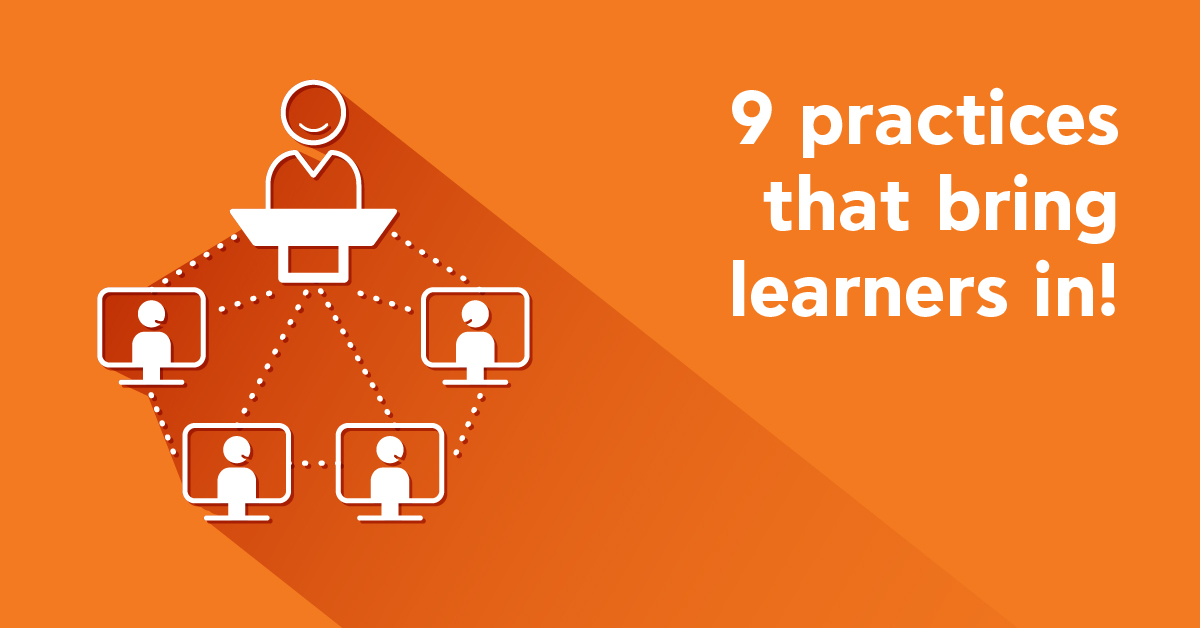eLearning course facilitation is not an extension of a course developer’s job. Contrary to popular belief, instructional designers do not teach the courses they create. The reason being one and only: course facilitation is a complete field that requires training before practice. Course facilitators are increasing in number to meet the needs of hybrid and online training programs. However, the demands of live course facilitation differ from those of online courses. In this article we’ll talk about some cool eLearning course facilitation strategies to create efficient learning experiences.
Pedagogy for the current digital environment has undergone a massive revolution. The use of productive technology that assists in mundane tasks has brought about this remarkable change in learning.
In today’s learning environment, one cannot teach without having experience in the use of technology. Furthermore, it is a well-known fact that learners today are far more motivated and focused in their learning than the previous generations.
Technology has broadened the scope as well as the application of learning. But the widespread use of technology has created a gap between teaching strategy and the instruction that a learner expects.
But what kind of technology is the learner expecting and how can course facilitators provide it?
Learners are hard to attract and retain in an eLearning environment. The traditional environment uses various teaching aids like charts, graphs, or flash cards. eLearning courses, however, can do much better. The challenge here is not to create learning aids, but the level of interactivity achieved by them.
This is especially true for instructor-led training programs (ILT). The eLearning course in this case is hybrid, and can be facilitated as synchronous or a live session. Both instances of an eLearning course utilize educational technology tools.
If you are an online course facilitator, there are several ways you exercise effectiveness. eLearning course facilitation requires rigorous training before facilitators are ready to administer an eLearning course.
Some of the strategies taught in such training programs are mentioned below. These will help boost your popularity among eLearners and the success of the eLearning course you are facilitating.
1. Independent Material
One of the most popular preferences of online learners is access to external resources. The goal here is to replace the massive content with supplemental resources that are meant to be explored.
Adult learners also enjoy “digging deeper” through an external link and extract supporting information. This strategy is akin to the browsing habits of today’s learners. With fewer boundaries around the course, learners will enjoy the freedom to learn as much as they need.
Providing independent material is also a fun way to learn. Learners who are shy in participation will definitely find that this method works well for them. They will be able to provide more helpful links and opinions in the discussion board activities.
2. Embed Videos and Audios
We know, we know. This has been one of the biggest overstatements of the eLearning industry! Embed more videos and audios. The truth of the matter is, these multimedia resources do help a lot!
Imagine your learners driving or even cooking at home. They can easily turn on the audio podcast and enjoy listening to the content rather than reading it. Similarly, for more visual learners, videos are a great way to connect abstract ideas with concrete representations.
So, if you have eLearning content that has minimal audio and video, conduct your own research. Start with the latest news based on the content. Any blogs that talk about the application of the content you are about to teach? Find a few multimedia resources and discuss with your eLearning team whether their placement is okay or not.
Being proactive as a facilitator is a required skill to teach in the current digital learning environment.
3. Work-based Role Play
Before you dismiss this idea as childish, we would like to explain it through. Role playing within a virtual classroom has purportedly created improved interest in (and awareness of) the content.
The roles developed for an eLearning course need to be relatable with the learner’s work environment. The nature and challenges of the learner’s work context can be determined during the learner analysis phase of instruction design. The work scenario is demonstrated using relevant and culture-sensitive background images. The problems in the scenario are linked to the learning goals of the topic and are stated clearly.
When the learner interacts with the scenario, they need to adopt a role. Based on the responsibilities of the role, the learner responds to the problems. This technique can be made as complex as the learner capabilities. Learners learn countless management, communication, decision making, critical thinking, analysis and even synthesis skills using this strategy.
As a facilitator, you need to make sure that you understand the work-based issues of individual learners. This will help you assign roles accordingly. When learners realize the value of their learning in their performance context, they enjoy the learning session even more.
And the credit goes to you, the course facilitator!
4. Participative Materials
Real-time, two-way or one-on-one interaction does wonders for distance learners. As a facilitator, you have the use of multiple online collaboration tools. Be sure to engage with your learners using a variety of them. This will give you an idea of whether emails work best for this batch of learners, or online discussions or live groups chats for another.
Another great way to facilitate tougher courses is to request learners to create their own rules of engagement. Once they create the course participation rules themselves, they are more likely to follow them.
5. Evaluation Tools
The trend of using “emoticons” has invaded a multitude of mobile apps and online programs. Use the same for your course facilitation style as well as course content evaluation. Emoticons like happy face, angry face, confused face and even the “like” icon can be used to answer evaluation questions.
For angry and confused faces, you can ask for a brief explanation. A light-hearted approach towards evaluation keeps things fun and casual. And remember, learners reveal more about themselves in a casual setting than in a formal one.
Course facilitation – easy, isn’t it?
As eLearning developers strive to create learner-centered learning materials, course facilitators need to follow suit. Facilitators can work in collaboration with eLearning developers to offer experienced input on what the learners desire in a course.
This field knowledge will aid the eLearning developer to create quality materials. Together they can produce impactful and effective learning experiences.
| Tags: eLearning Courses,eLearning Tips



